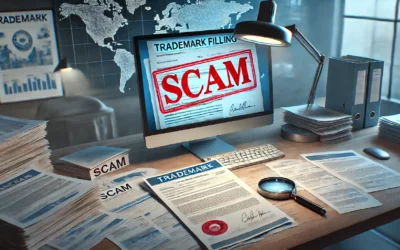Keeping good documentation of your trademark use is an important but often overlooked part of maintaining a robust trademark portfolio. There are many advantages to documenting trademark use. Conversely, if you don’t keep documentation, you might, in the worst case, lose your trademark. So, why is good documentation so important?
Establish Rights (Maybe)
Although it is not possible to obtain EU-wide trademark rights just by using a mark without registering it, there are individual countries where that is possible.
There are countries where, if you use your trademark, you get trademark protection even without registration. These include some European countries. For example, using a trademark gives rise to trademark rights in Denmark as soon as the use commences, and the mark has more than mere local significance.
Around the world, there are also other countries where the mere use of the mark gives trademark rights. The most important example of this is the United States. If you want to claim these rights, you must be able to prove that you have actually used the mark.
There are also many countries where the use of the mark does not automatically and immediately give rise to trademark rights, but if the mark is used consistently over a long period, trademark rights are eventually established. The threshold that must be reached to get trademark rights depends on the country. The threshold is typically linked to the degree of recognition of the mark in its target group.
If you use your mark in a country where it is possible to acquire trademark rights based on use, documentation of your use is crucial. Without good documentation, it is not possible to prove the existence of acquired trademark rights.
Help Your Registration (Acquired Distinctiveness)
If your trademark is not inherently distinctive, it may still be possible to register it if it becomes distinctive through use. So, the use of the mark can push it over the registrability threshold, even in those countries that do not recognize unregistered trademarks. The EU trademark is an example of this.
According to EU trademark regulation, a trademark can be registered if it has “become distinctive in relation to the goods or services for which registration is requested as a consequence of the use which has been made of it.”
In that case, the target public will recognize your trademark as a commercial symbol, rather than a descriptive term.
So even if your trademark is inherently descriptive (non-distinctive), your use of the mark can result in it becoming distinctive and registrable. In that case, the crucial issue is what kind of evidence you can produce demonstrating the use of your mark.
If you apply for a trademark and it is refused because it is non-distinctive, if you can provide evidence that you have used the marks for a long time, it may be possible to show that your trademark has acquired distinctiveness and can be registered.
Oppose Conflicting Application
If your trademark registration is more than 5 years old, there is an additional requirement if you want to oppose a later infringing trademark application.
It is that you must be able to prove that you have used your trademark for the goods and services covered by the registration. This obligation to provide evidence of use is not automatic. It arises only if the trademark applicant requests that you prove the use of your mark.
In practice, if your trademark registration is more than five years and the applicant is represented by an attorney, such a request will be made almost always.
If you are not able to prove that your trademark has been used, it will not have legal effect in the opposition proceedings. In other words, if your trademark registration is more than five years old, you might not be able to oppose other applications if you cannot prove the use of your trademark. Also for this reason, it is important to keep good documentation of your trademark use.
Get Extra Rights with Reputation
Most countries, including the EU, provide extra protection for those trademarks that have a “reputation” or are “well-known”. Having this status enables you to prevent others from using a mark that might not be confusingly similar but is taking advantage of your reputation.
You are entitled to this protection if you can provide evidence that shows that your trademark is “known by a significant part of the public concerned by the goods or services covered by that trademark”.
Maintain Your Registration
Once your registration is five years old (three in some countries), it will be under “use-obligation”. This means that if you have not used your mark in five (three) years, others can seek its cancellation.
The worst-case scenario is that you lose all rights to a brand you have built for a long time. If somebody challenges your registration based on non-use, the real question is not whether you have used your mark, but whether you can prove that you have used it. If you cannot provide documentation showing the use of your mark, your registration will be canceled.
This is what happened in 2019 in the EU to McDonald’s. They could not provide sufficient proof of having used the trademark BIG MAC in the EU. As a result, the EUIPO canceled their trademark registration (it was later partially overturned on appeal).
What Kind of Evidence
The evidence of use is assessed as a whole, taking all relevant considerations into account. Each piece of evidence is assessed in conjunction with other pieces of evidence. Typical materials that can be presented to show use of the mark include the following:
- Advertisements
- Brochures, catalogues, and leaflets
- Screenshots
- Photos from trade shows and other events
- Invoices
- Newspaper articles and mentions in social media
- Market surveys
The documentation should also contain information about the time and place of the use. For example, if you want the evidence to show that your trademark has acquired distinctiveness in the European Union, the documentation must show that you have used the trademark in the European Union before the date you filed the application.
Conclusion
Whether you want to establish trademark rights, maintain existing rights, or even get extra rights, you will have to keep good documentation of your trademark use. Without such documentation, you run the risk of not being able to enforce your rights or losing them altogether.
Read more
Cancelled BIC MAC – Where’s the beef?
Trademark use obligation – use it or lose it
Reputation – trademark’s superpower



